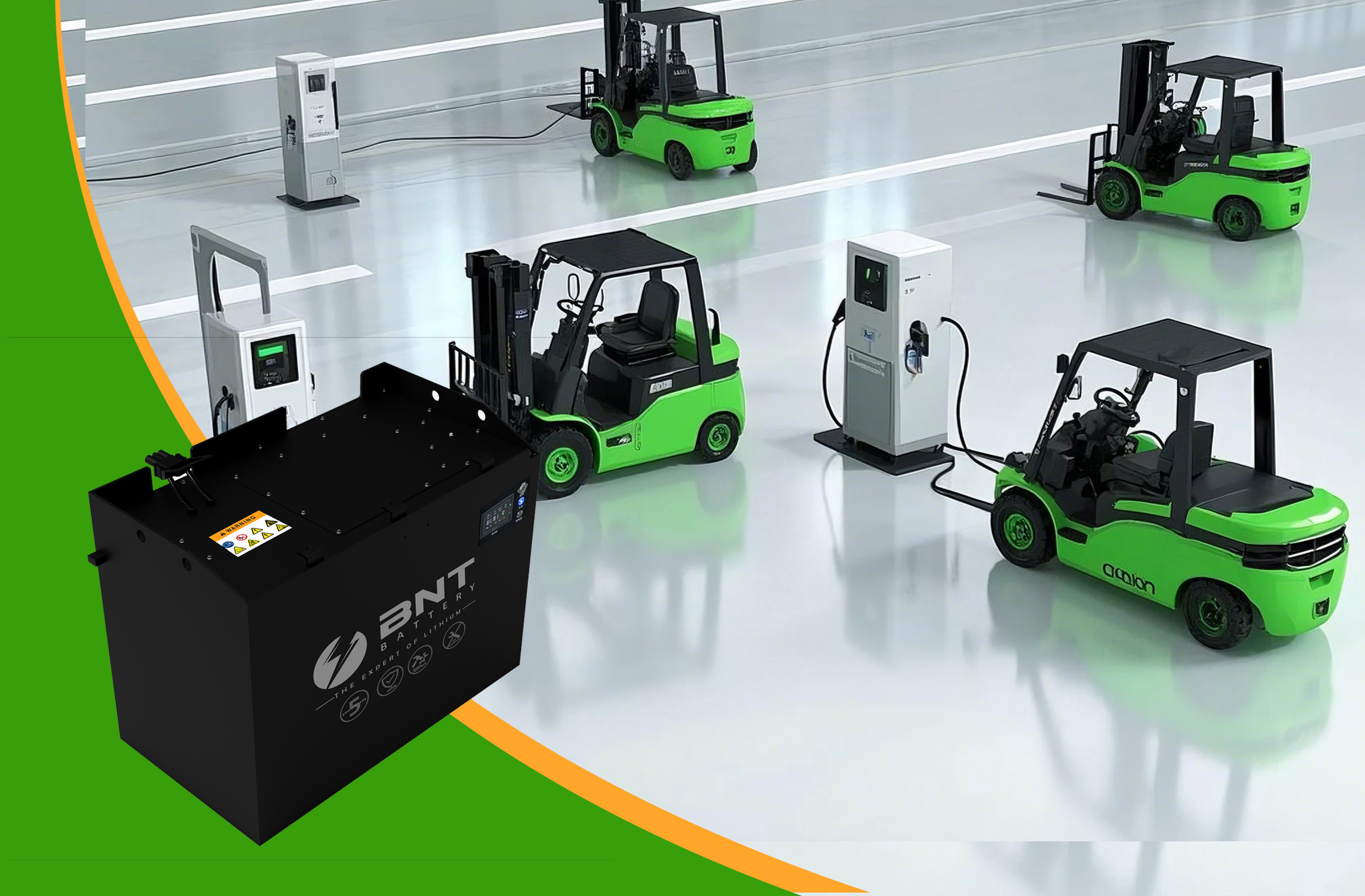Choosing the right lithium forklift battery for your fleet involves evaluating several key factors to ensure optimal performance, cost-efficiency, and longevity. Here’s a step-by-step guide to help you make the best decision:
1. Determine Battery Voltage & Capacity
Voltage (V): Match the battery voltage to your forklift’s requirements (e.g., 24V, 36V, 48V, 80V).
Capacity (Ah): Choose a battery with sufficient ampere-hours (Ah) to support your shift length. Higher Ah means longer runtime.
2. Assess Power Needs (Continuous & Peak)
Continuous Current (A): Ensure the battery can handle your forklift’s average power draw.
Peak Current (A): Check if the battery can support short bursts of high power (e.g., lifting heavy loads).
3. Consider Battery Chemistry
LiFePO4 (LFP): Best for most forklifts—long lifespan (3,000–5,000 cycles), safe, and efficient.
NMC (Lithium Nickel Manganese Cobalt): Higher energy density but shorter lifespan than LFP,and not safe as LFP.
4. Evaluate Charging Requirements
Fast Charging: Lithium batteries charge faster than lead-acid (1–3 hours vs. 8+ hours).
Opportunity Charging: Lithium allows partial charging without damage (unlike lead-acid).
5. Check Physical Dimensions & Weight
Ensure the battery fits your forklift’s compartment.
Lithium batteries are ~30–50% lighter than lead-acid, which may affect forklift balance (adjust if needed).
6. Compare Lifespan & Cycle Life
Lead-acid: ~1,000–1,500 cycles.
Lithium (LFP): ~3,000–5,000 cycles (longer ROI).
7. Review Battery Management System (BMS)
A high-quality BMS protects against overcharge, overheating, and deep discharge, extending battery life.
8. Analyze Total Cost of Ownership (TCO)
Upfront Cost: Lithium is more expensive initially but cheaper long-term.
Maintenance Savings: No watering, equalizing, or acid spills.
Energy Efficiency: Lithium uses ~30% less electricity than lead-acid.
9. Check Compatibility with Chargers & Forklifts
Some older forklifts may need a voltage compatibility check.
Ensure your charger supports lithium (smart chargers preferred).
10. Consider Fleet Management Features
Advanced lithium batteries offer telemetry (remote monitoring of charge cycles, health, etc.).
11. Verify Warranty & Support
Look for at least a 5-year warranty for lithium forklift batteries.
12. Consult a Reputable Supplier
Work with an experienced lithium forklift battery provider for tailored recommendations.
For most fleets, a LiFePO4 (LFP) battery with the correct voltage, capacity, and a robust BMS offers the best balance of performance, lifespan, and cost savings over time.
Post time: Apr-16-2025

